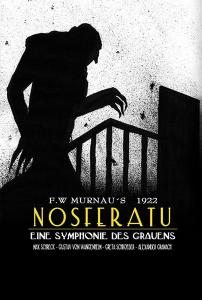
Nosferatu (1922) – The Grandfather of Horror Still Bites Hard
F.W. Murnau’s Nosferatu (1922) is the primordial ooze from which the entire genre crawled. Nearly a century after its release, this German Expressionist masterpiece still has the power to unnerve, amuse, and amaze. Yes, it’s in the public domain, meaning you can legally stream it, screen it, or project it onto your neighbor’s garage wall — and frankly, you should. Max Schreck, as the eerie Count Orlok, gives a performance so unnerving that for decades people joked he was a real vampire. He doesn’t suck blood so much as crawl into your subconscious and redecorate the place.
What sets Nosferatu apart isn’t just its historical significance, but its style — those elongated shadows, the tilted sets, the strange rhythms of silent cinema that now feel dreamlike. Murnau’s camera doesn’t just record; it haunts. The film is an unauthorized adaptation of Bram Stoker’s Dracula, and despite the estate's attempts to destroy all copies, Nosferatu survived, like its lead character, in shadow. The visual iconography — the hunched silhouette climbing the stairs, the clawed hand reaching for the doorknob — is still being borrowed, parodied, and praised to this day. It’s cinema’s oldest jump scare, with fangs.
Watching Nosferatu today isn’t just an education in film history — it’s a strange joy. It's funny, in a way, how such an old film can still feel fresh. Maybe it’s the lack of CGI. Maybe it’s the sheer weirdness of it all. Or maybe Max Schreck just knew how to work a cape. Whatever the reason, Nosferatu endures. It’s spooky, it’s artsy, and it’s gloriously public domain — a rare film that belongs to all of us, like a cursed heirloom we’re strangely proud to show off every Halloween.
Director: F.W. Murnau
Starring: Max Schreck, Greta Schröder, Ruth Landshoff







